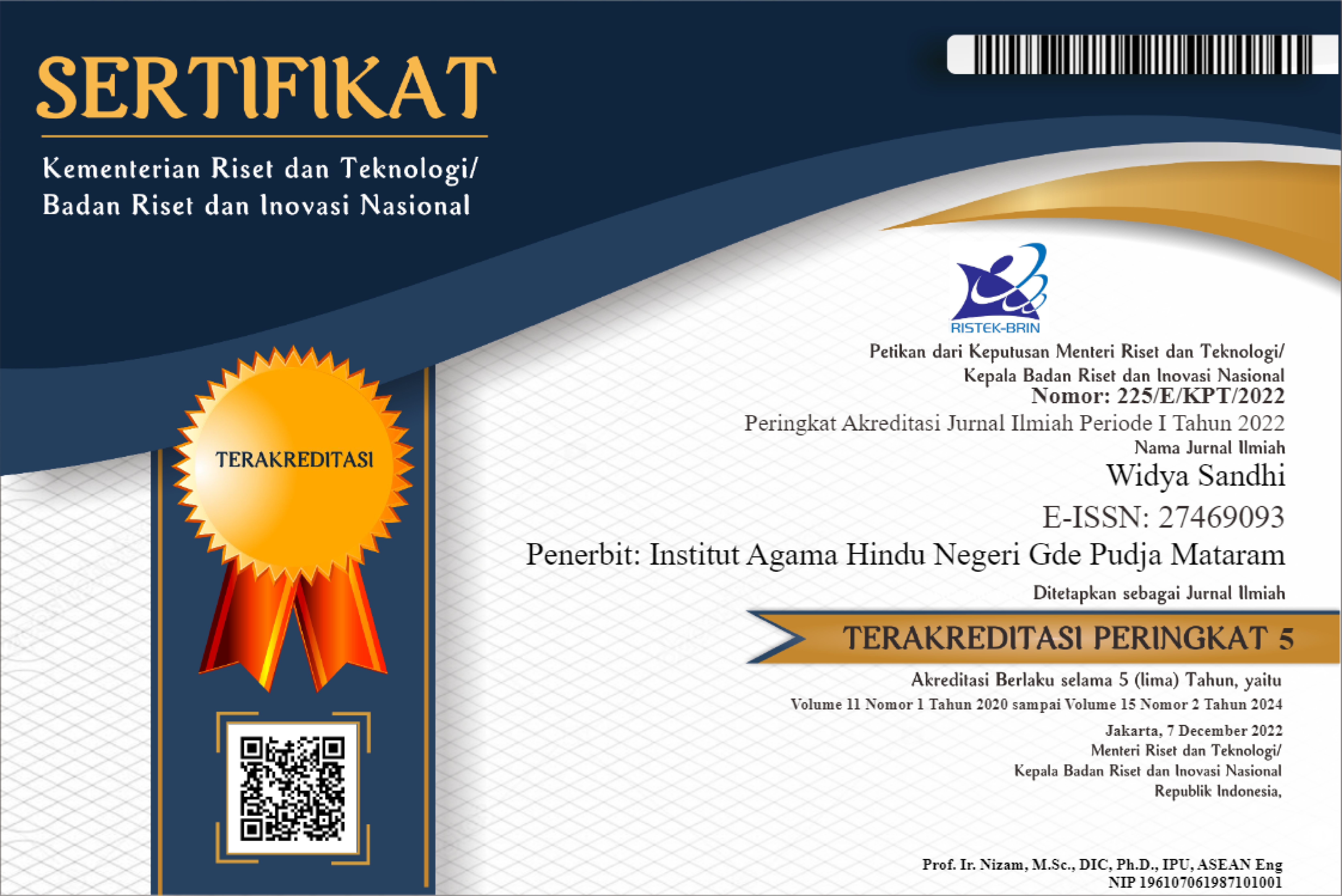ACCREDITATION
Widya Sandhi is a scientific journal published by Sekolah Tinggi Agama Hindu Negeri Gde Pudja Mataram. This Journal contains research and conceptual articles with a focus on studies of Religious, Social and Cultural Studies. We invite scientists, scholars, researchers, and students to develop their scientific and publish the results of their research after the selection mechanism of the manuscript, review of peer reviewers, and editing process.
The scope of Widya Sandhi :
- Religious Studies
- Social Studies
- Cultural Studies
Publication Frequency
Widya Sandhi published twice a year, in May and November.
References Management
Widya Sandhi in citation writing and Bibliography using Mendeley's Reference Management Software.
Content Licensing
This work is licensed under a Widya Sandhi Creative Commons Attribution-NonCommercial 4.0 International License
Digital Archiving
This journal utilizes the Indonesia One Search (IOS) to create a distributed archiving system among participating libraries and permits those libraries to create permanent archives of the journal for purposes of preservation and restoration. And Open Journal Systems supports the LOCKSS (Lots of Copies Keep Stuff Safe) system to ensure secure and permanent preservation of your journal.
The Originality of Journal Articles
Quotations must be identical to the original, using a narrow segment of the source. They must match the source document word for word and must be attributed to the original author. Paraphrasing involves putting a passage from source material into your own words.
A paraphrase must also be attributed to the original source. Paraphrased material is usually shorter than the original passage, taking a somewhat broader segment of the source and condensing it slightly.
Summarizing involves putting the main idea(s) into your own words, including only the main point(s). Once again, it is necessary to attribute summarized ideas to the original source. Summaries are significantly shorter than the original and take a broad overview of the source material.






.jpg)




